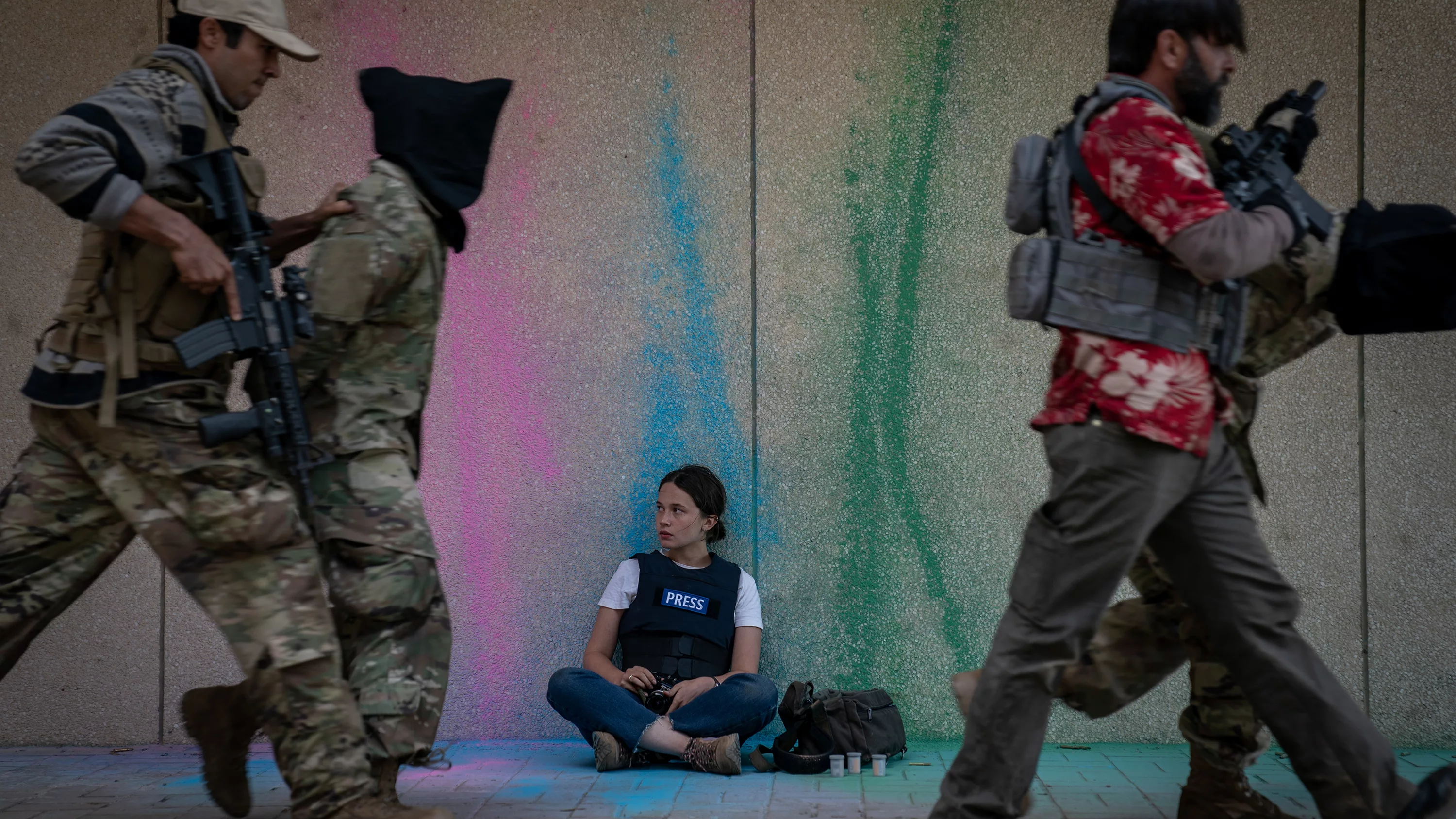
The new dystopian thriller reminds viewers it’s not just what we witness that matters, but how.
There’s nothing more frightening than the sound of a camera shutter in the new film Civil War.
Distributed by A24, the production company behind releases like Everything Everywhere All at Once and Past Lives, the movie depicts the remnants of a United States government battling the Western Forces, an alliance between Texas and California. If you’re looking for reasons—Why these factions? Why now?—you won’t find any answers. The film is frustratingly opaque on logistics, though we’re able to hypothesize based on a few offhand comments. (The unnamed president, played by Nick Offerman, is entering his third term and isn’t gun-shy about using air strikes against American citizens.) Even so, a California that cooperates with Texas seems far-fetched.
For writer/director Alex Garland, our incredulity is the point. “I find it interesting that people would say, ‘These two states could never be together under any circumstances.’ Under any circumstances? Any? Are you sure?” he told The Atlantic. By asking us to accept his premise, Garland forces viewers to consider the ideological divisions we take for granted. Turns out, the why doesn’t matter all that much. Dystopia, no matter how it comes about, is still dystopia.
What is clear, though, is that the war provides an opportunity for journalists, capitalized on by photojournalist Lee (Kirsten Dunst), her Reuters colleague Joel (Wagner Moura), and her mentor, New York Times reporter Sammy (Stephen McKinley Henderson). Their coverage of atrocities shapes our experience of this imagined future. Many of those chilling camera shutter sounds come from Lee, as she documents truly terrible scenes of domestic conflict with …

